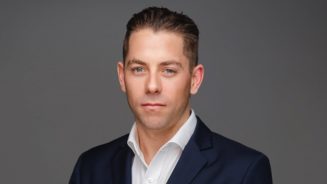Socially responsible
Brown’s investment career started at Pensions & Investments Research Consultants, where he was a senior researcher. His City career began in earnest when he joined Threadneedle Asset Management in 2004 where, as well as having the role of pan-European equity analyst, he was head of governance and responsible investment.
“At that time it was quite early days for sustainability and the two roles were still separate. Ever since, I have specialised in bringing those two things together.”
Before joining Alliance Trust in August 2012, Brown spent four years at Aviva Investors as a socially responsible investment analyst and then fund manager.
His approach to investing is to start by identifying the core value drivers of a sector and then finding big, structural themes that will drive those stocks. He focuses on high-quality companies, looking at prospective future cashflows and then assessing the environmental and social issues that will materially impact on a business.
“We set out the core value drivers of a sector and look at what has driven total shareholder return over the past five or 10 years. Then you’ve got these key issues to bring in: what are the things they are doing, how well is this company managed, does it give me confidence on those forecast earnings?
“The buzzword in sustainability is ‘integration’. You have to bring these issues directly into investment calculations,” he says.
One theme currently engaging Brown is how our eating habits are changing, resulting in a rise in obesity. “It is an issue that is impacting on a number of different companies and we play this all the way through the value chain,” he says.
This avenue has led his fund to take a big stake in Kerry Group, an Irish-based international food and technology company. Brown says 65% of all product launches last year had a ‘healthy’, ‘free-from’ or ‘wellness’ banner of some sort. “Kerry gets the call when people need to reformulate their brands,” he says.
The fund also has a position in Novo Nordisk, the global healthcare company that produces a lot of the insulin needed to treat type 2 diabetes. “In a low-growth environment, I am looking for stocks that have a structural reason to grow.”
Banking reservations
Brown has recently reduced his 20% plus holding of financial stocks, even though financials – in particular big, stable quality banks – had produced good returns for him over the past three years.
“This has been a banking-led recovery to a degree – they were always the mechanism for central bank action. But we have got to a stage now where more central bank action could actually bring some risk.
“So we’ve just changed the risk premium around the sector and taken some profits from what has been a great run.”
Most recently, Brown’s fund cut its position in Italy’s Intesa Sanpaolo bank. “It’s a great bank that has done well for us. But we cannot ignore the difficulties in the Italian banking sector, the scale of the potential bad debt problem and the difficulties Italy faces in working out a mechanism to save them.”
In the technology sector Brown has recently become interested in the growing overlap between computers and cars. “The semi-conductor content per car is continuing to climb as we move to electric cars and as we add all these active safety systems.
“You don’t need to think we are all going to be driving electric cars to believe in having more safety systems, such as sensors and cameras. Infineon Technologies is a great play on that.”
Brown’s fund also holds ASML, a Dutch company that is currently the world’s biggest supplier of photolithography systems for the semi-conductor industry.
ASML is investing heavily in extreme ultraviolet in a bid to stick to Moore’s law, which predicts a doubling of semi-conductor demand every two years and which has recently begun to seem impossible to achieve.
“We are coming up against hard barriers there. ASML has invested heavily in this next generation of technology,” says Brown. “But this is what we’re looking for – the innovators and adapters, those companies that are real structural growth drivers.”




